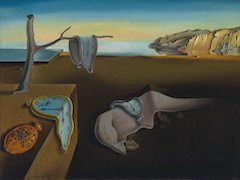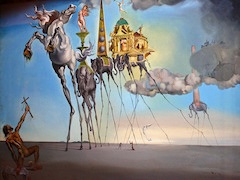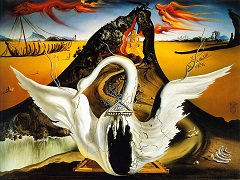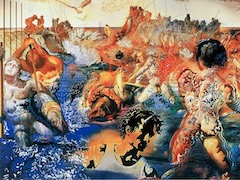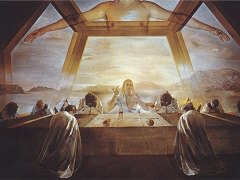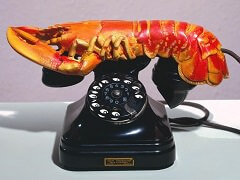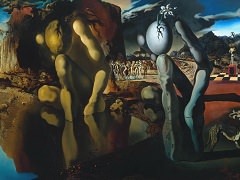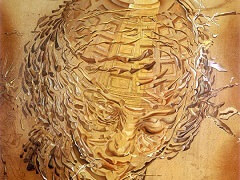Interpretaton of Goya's Los Caprichos by Salvador Dali
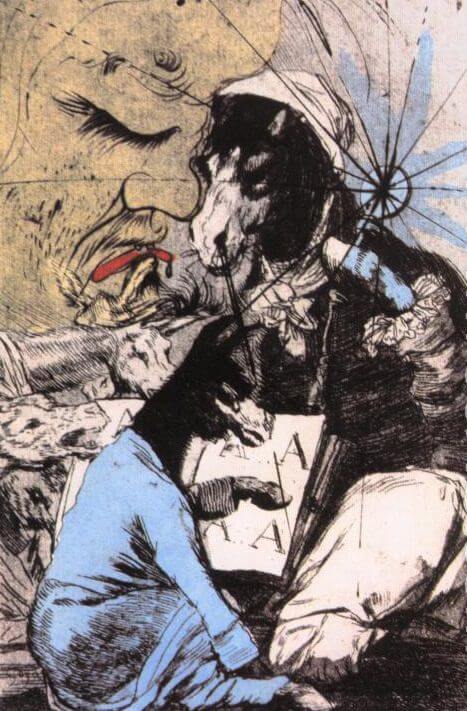
Francisco Goya was a Spanish artist of the eighteenth century. He had initially painted in the style of Diego Velazquez, a painter who Dali also admired, but after an illness which left him deaf, Goya began to use more personal and social themes in his works. Los Caprichos (1798) was a series of etchings. They were banned in Spain because of their anti-clerical stance, but they were popular elsewhere.
Following his illness, Goya's work was dominated by a palette of gray, brown, and black, emphasized by red. Dali has mimicked this palette for his interpretation, as well as the cartoon-like quality that some of Goya's work had. Whilst firmly in the style of Goya, there are still the Dalinian touches to the drawing. The shape of the man's head on the left, with its eyes shut, long lashes, and a frown on the forehead, is reminiscent of the huge heads seen in paintings such as The Enigma of Desire,(1929).
The donkeys in this drawing are characterized as human; they write letters and wear clothes - a visual metaphor for the foolishness of mankind.

